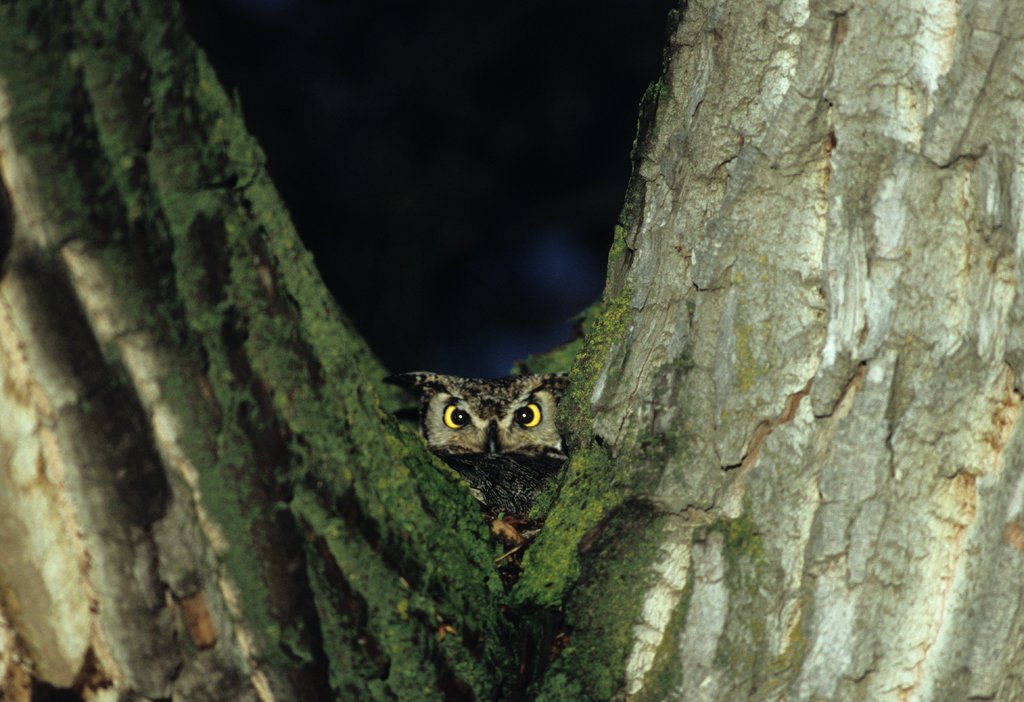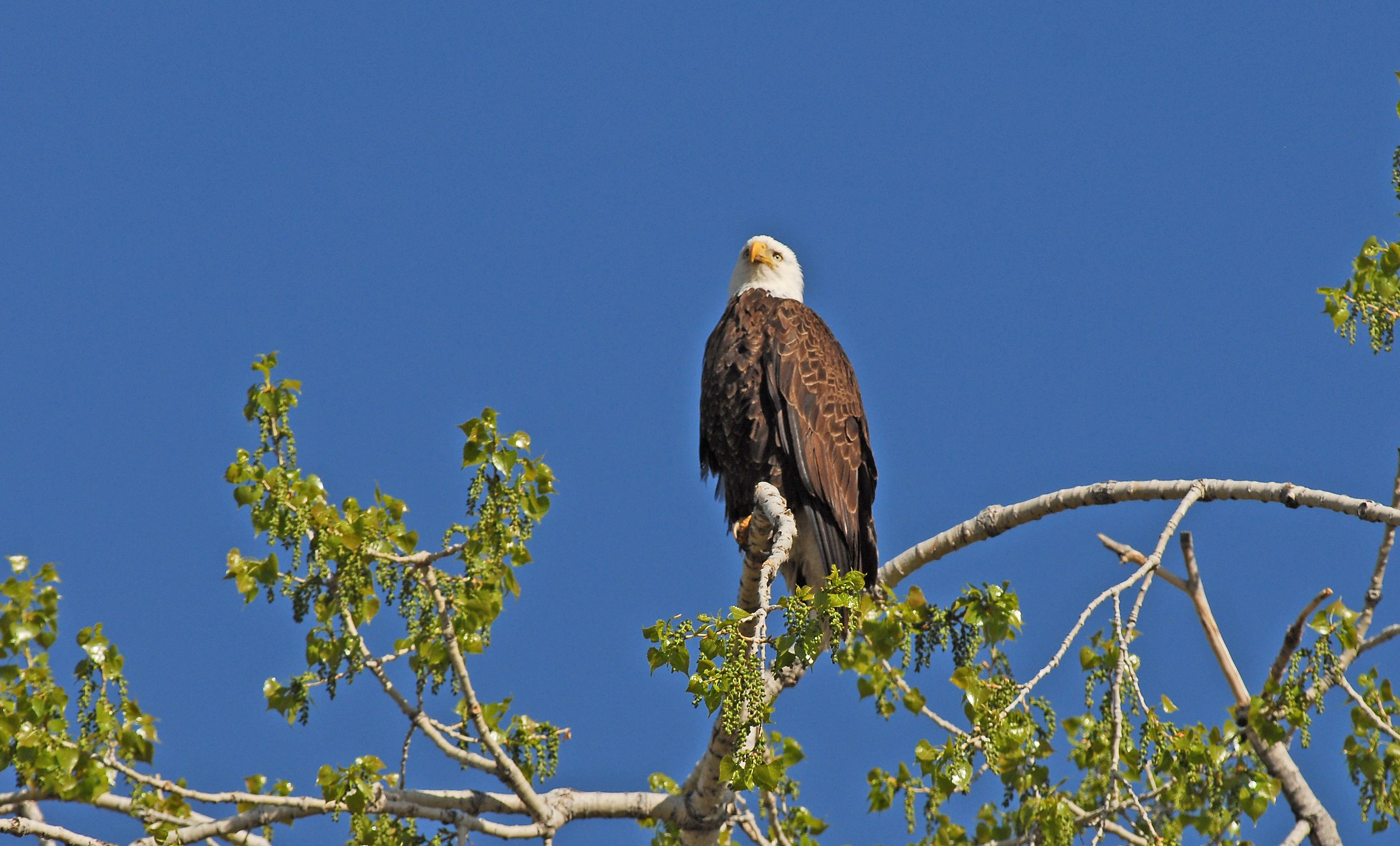November Nature Almanac: Courtship!
By Stephen Jones, with Ruth Carol Cushman and Scott Severs
"Why are the Great Horned Owls in my neighborhood hooting so much?"
"Why are the Bald Eagles already working on their nests?"
"Why have the meadowlarks resumed singing in the pasture behind my house?"
"Why are the ducks at Sawhill Ponds chasing one another across the water?”
Courtship is the simple answer, even if it seems premature during these first cold days and nights of the winter season. But getting a head start on pairing and mating helps birds, mammals, and other beings increase their chances of rearing young come springtime.
For Great Horned Owls, it's partially a matter of staking out and defending nesting territories within a crowded environment. These highly successful urban-adapted predators nest virtually everywhere in Boulder County except the alpine tundra, and they need to devote a significant portion of their waking hours to advertising their nesting territories. Hooting also contributes to pair-bonding.
During late autumn, Great Horned Owls may perch in potential nest sites while hooting out territorial duets. Photo by Stephen Jones.
It's easy to distinguish between the calls. The male's "who-whooo, whoo-hooo," sounds deeper and shorter than the female's higher-pitched and more complex, "who-wh-hoo, who-whoo-hooo." Studies indicate that though Great Horned Owls vocalize throughout the year, their most vigorous and sustained duets often occur during November and December.
Bald Eagles face a similar challenge. Their precious nesting territories, encompassing a square mile or more, are constantly coveted by other adult and subadult eagles. So adult pairs may spend up to 30% of their daylight hours in November and December perching on their nests, even though they won't lay eggs until February. You'll see them carrying sticks to their nests as well. This activity increases the odds that their vulnerable young won't suffer from sunburn or predation by other raptors when they finally hatch in March.
Bald Eagles perch and bring sticks to their nests in plains cottonwoods throughout the fall. Photo by Stephen Jones.
The meadowlarks engage in something that has been described as recrudescence bird song. This is the tendency for some songbirds to stop territorial singing once their young have fledged in summer but resume singing again around the time of the autumn equinox. One theory asserts that the shorter day length, reminiscent of the spring day length, causes the release of sex hormones that stimulate territorial singing. Another suggests that most of the singers are youngsters practicing their arias well in advance of the highly competitive spring nesting season.
To our ears, most of these autumn songs sound a little off-pitch or abbreviated. In other words, the songs "may not fool anyone." So they're most likely not used to advertise territories, especially since most of our songbirds will migrate south and not return for several months.
A few songbird species do sing throughout the winter to advertise foraging territories. Townsend's Solitaires warble out finch-like songs from atop junipers to keep other birds away from the juniper fruits and American Dippers sing from rocks in Boulder Creek and other streams where they dive for nymphs and other insects. Crossbills, who will nest whenever and wherever they find abundant conifer cone crops, also sing throughout winter.
Many of our duck species form mate pairs for life, or at least strive to (marital infidelity seems as common among waterfowl as among humans). Engaging in fall courtship behavior helps ducks and geese to strengthen their pair bonds throughout the year.
Hooded Merganser males skitter across lake surfaces, throw back their heads, and whir their wings to impress potential mates. In this image are three male Hooded Mergansers mid-display, surrounding a female Hooded Merganser. Photo by Stephen Jones.
Beginning in December, we've seen male Hooded Mergansers performing their elaborate courtship dances at Prospect Park, along Clear Creek east of the Coors Brewing Company. It turns out that effluent (beer suds) from the factory keeps the water in the creek and adjacent ponds warm and clear of ice throughout the winter, offering waterfowl a chance to gather and court at a "ducky" equivalent of a singles bar.
As many as a half-dozen male Hooded Mergansers dance across the surface, throwing their heads back, whirring their wings, and chirping excitedly, hoping to win the affections of a single female. These displays will continue right into March when pairs of hoodies finally choose a woodpecker cavity within which to nest.
So when we go out walking in November and hear sounds that seem more appropriate for spring than fall, we've learned not to question what we're hearing. To our ears, the music has become yet another indication that we live in an infinitely complex and loving universe.
Other November Events
Early Easter daisies may begin blooming on south-facing shales in foothills canyons.
Wild Turkeys begin to gather in mountain meadows to dance and mate.
Common Loons, Tundra Swans, and other late migrants from the north begin to appear on local lakes and reservoirs.
Easter daisies can start blooming early. Photo by Stephen Jones.




